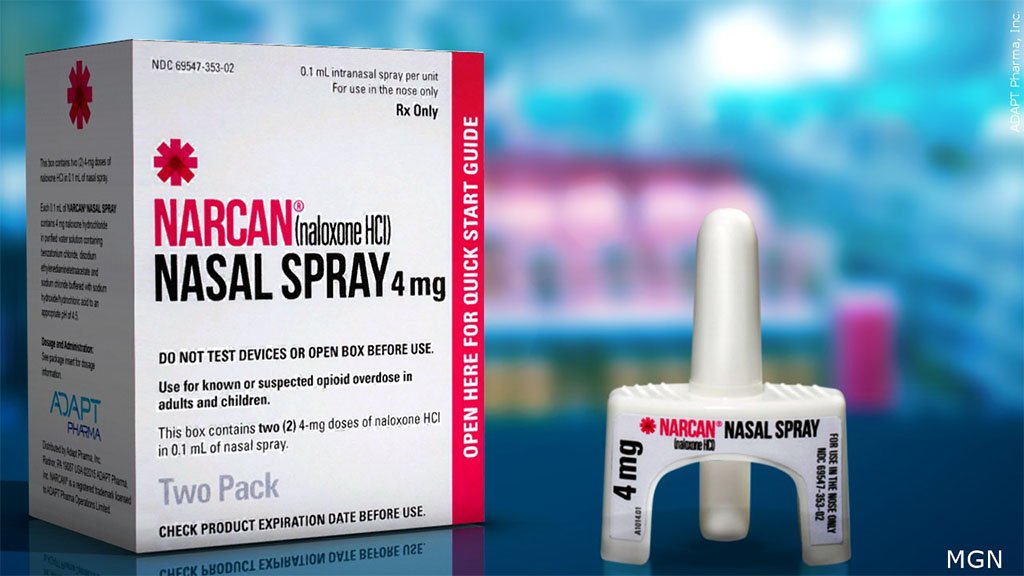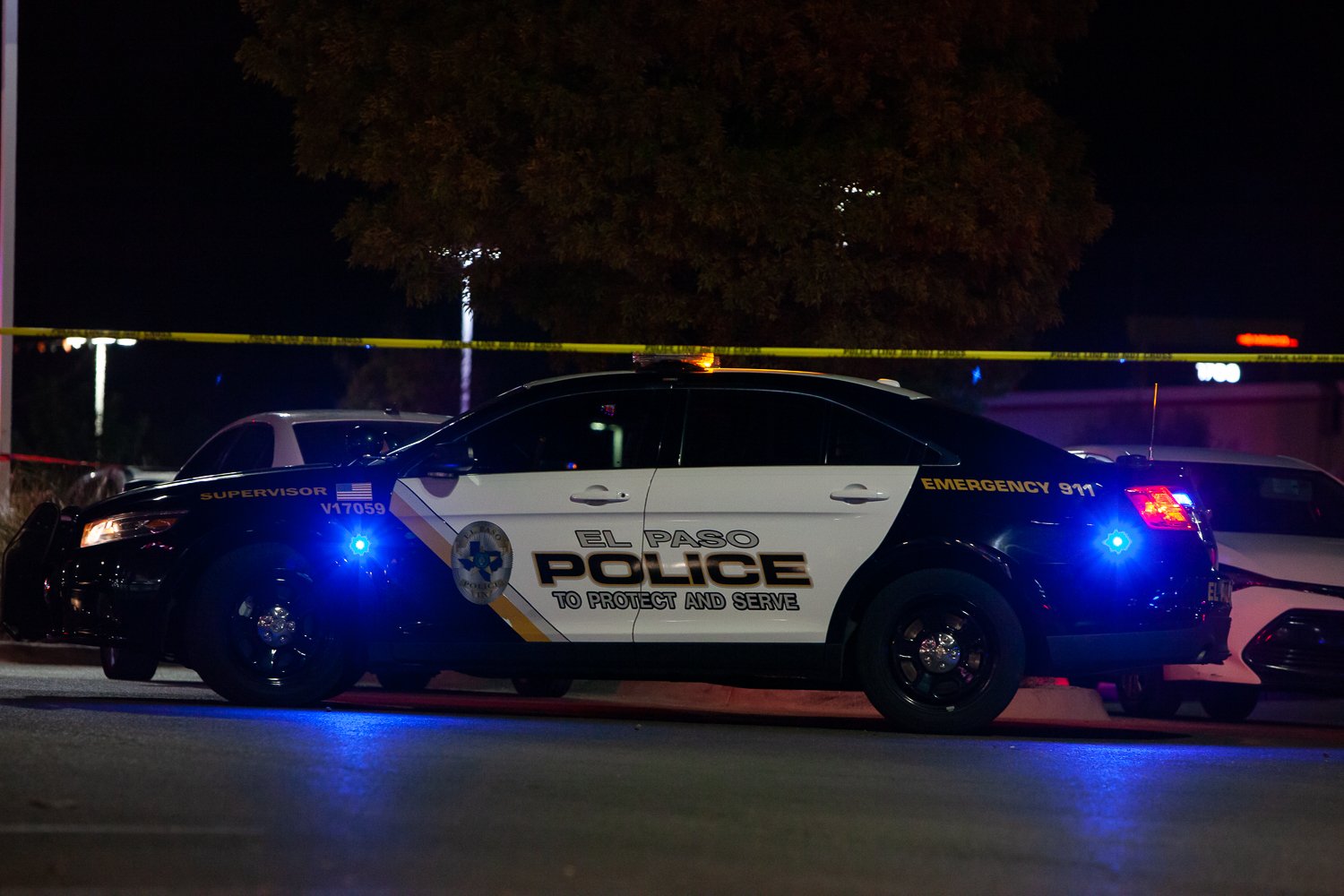Narcan on hand: EPPD patrol officers don’t carry Narcan amid skyrocketing overdose deaths

EL PASO, Texas -- In the early morning hours of July 23, 2019, two police officers responded to a welfare check at a Northeast El Paso apartment. There, they found an unconscious 21-year-old man, with purple lips and a faint pulse. He had snorted a crushed pill marked “M30,” a counterfeit oxycodone pill containing fentanyl, the officers would later confirm. They called for Fire and Medical Services to come, and then they waited as the man overdosed in front of them.
The officers waited because most El Paso Police Department patrol officers do not carry Narcan -- a lifesaving medication that reverses opioid overdoses and is increasingly being used by law enforcement personnel around the country. FMS was able to revive the man with Narcan.
Two years later on April 7, 2021, a woman overdosed at the El Paso home she shares with her husband and two children. Even though the police were the first to arrive on the scene, they had to wait until FMS came for her to be revived using Narcan.
Patrol officers not having Narcan on hand is an ongoing issue at the El Paso Police Department, according to an email Sgt. Alfredo Pineda sent fellow officers in August 2021, obtained by El Paso Matters through open records requests.
“Narcan spray should be available to all patrol officers,” Pineda wrote. “I’ve encountered quite a few (people overdosing) during my patrol times and had to resort to calling FMS to administer Narcan because we didn’t have any.”
Despite rising numbers of opioid overdose deaths and years of internal emails from El Paso police officers asking for increased Narcan access, the department still distributes the same amount of Narcan as it did in 2018.
The EPPD has 85 Narcan kits total. The department has over 1,000 officers.
The opioid crisis in El Paso
Ninety-seven people died by opioid overdose in El Paso County in 2021, according to data the medical examiner provided on Jan. 26. (There are still some pending death reports for the year.) That's nearly twice the amount of opioid overdoses there were in 2018, part of a deadly nationwide trend of skyrocketing overdose deaths.
Overdoses cause more deaths in the United States annually than guns, suicide, homicide and car crashes, according to a bipartisan congressional report published in February. Two thirds of the nation’s overdose deaths between June 2020 and May 2021 involved synthetic opioids like fentanyl, the report said.
Fentanyl was involved in 47% of overdose deaths in El Paso County last year -- the youngest to die by fentanyl was a 16-year-old boy, the oldest a 68-year-old woman.
The congressional commission recommended “improving naloxone access” as a critical step toward reducing U.S. overdose deaths. Naloxone is the generic name for Narcan.
Narcan is an opioid antagonist, meaning it reverses the symptoms of an overdose, restoring breathing and blocking the effects of opioids on the body. Narcan can be administered with the click of a button and has no effect on someone who doesn't have opioids in their system.
The time that police spend waiting at the scene of an overdose until Fire and Medical Services arrive can be a matter of life and death, according to Lisa Cleveland, an associate professor at UT Health San Antonio School of Nursing who researches opioid morbidity. Cleveland leads More Narcan Please, a statewide effort to improve Narcan access using federal and state funding.
“Every minute does count,” she said. “Would it make a difference if law enforcement carried it versus waiting for (FMS)? Yeah, I think it definitely could.”
Beyond increasing someone’s chance of surviving an overdose, the more quickly Narcan is administered also reduces their chance of suffering serious brain damage. Reduced oxygen flow to the brain during an opioid overdose can cause permanent brain damage in a matter of minutes.
Resistant attitudes among officers toward Narcan can be the biggest barrier to it being used in the field, advocates say.
“(It) would be really great if El Paso could be a little more proactive and progressive on addressing this issue, but stigma is always the biggest obstacle,” said Adan Dominguez, program manager at Punto de Partida, an El Paso opioid crisis center that freely distributes Narcan to the community as part of a harm reduction approach to saving the lives of people who use drugs.

Harm reduction strategies include interventions and policies that attempt to meet people who use drugs ‘where they’re at’ as a way to minimize the negative impacts of drug use.
Dominguez estimated roughly 20 El Paso police officers have walked into Punto de Partida in the past two and a half years looking for Narcan kits -- because they hadn’t been supplied any -- so they could have the medication to use out in the field.
Conflicting messages over Narcan accessibility at the EPPD
The EPPD has publicly defended its Narcan supply and distribution, telling both El Paso Matters and city officials the medication was “accessible” to officers in the event of an overdose.
But internal emails between officers obtained by El Paso Matters suggest otherwise.
“Kits are available at all regions and to the patrol units and resupplied as needed,” spokesperson Sgt. Enrique Carrillo wrote in a Jan. 28 email to El Paso Matters.
Internal email correspondences contradicted Carrillo’s statement, as did a November 2021 interview with fellow EPPD spokesperson Sgt. Robert Gomez, who described a police department where patrol officers have limited access to Narcan.
“We don't carry Narcan,” Gomez said. “If it's available, (officers) know how to use it, but we don't currently carry it out in the field. We don’t administer it to the public in other words. We don't have it.”
Carrillo later clarified that not every officer has a Narcan kit, in an email sent Feb. 17.

Police Chief Greg Allen declined to be interviewed for this story.
City officials requesting information about Narcan availability have also gotten mixed messages.
When Deputy City Manager of Public Safety Dionne Mack emailed El Paso Police Cmdr. Humberto Talamantes about Narcan availability on Dec. 10, 2021, Talamantes responded that the medication was “accessible to officers and units to use in the event of an overdose.”
Yet a separate internal email thread among EPPD officers from early January, on which Talamantes was included, clarified that Narcan is only available at police stations and within certain patrol units, such as narcotics and K-9.
And even then, not every officer within these units has a Narcan kit, emails revealed.
Among Fire and Medical Services, a branch of the El Paso Fire Department, the amount of Narcan kits used in the field has increased by 52% in the past two years, from 349 kits in 2019 to 531 in 2021, according to EPFD spokesperson Enrique Dueñas-Aguilar. All paramedics are trained to use Narcan, and it is carried in all ambulances, said Fire Battalion Chief Gustavo Tavarez.
Gomez, the EPPD spokesperson, acknowledged officers’ dependence on the fire department when responding to overdose calls, saying, “We rely heavily, of course, on fire and medical services.”
Changing Narcan norms in law enforcement
For some officers in the El Paso Police Department, El Paso is behind the times in terms of Narcan availability among law enforcement.
“In this day and age, I would say it is a must to have Naloxone,” Sgt. Jeremy Ontiveros wrote in an August 2021 email sent to El Paso Police Training Academy officers.

National drug policy leaders have been calling for widespread availability of Narcan among law enforcement officers for nearly a decade.
In 2013, Michael Botticelli, director of the nation’s drug policy under then-President Barack Obama, said Narcan “should be in the patrol cars of every law enforcement professional across the nation.”
The following year, the Department of Justice called on local first responders, including law enforcement, to carry it.
A 2016 report by the International Association of Chiefs of Police called Narcan programs “a critical tool … for law enforcement executives seeking to stop opioid overdose fatalities.”
In Texas, Gov. Greg Abbott has identified rising overdose deaths by fentanyl as a major problem facing the state.
“If you look at the age group of those (Texans) between the ages of 18 and 45, the leading cause of death is not COVID, it’s not cancer, it’s not car wrecks. The leading cause of death is fentanyl,” Abbott said during a Feb. 15 roundtable on the fentanyl crisis.

Texas Senate Bill 1462, passed in 2015, protects anyone who uses Narcan on someone else from civil or criminal liability -- including police officers.
“Experiences of law enforcement agencies outside Texas leave no question about the ability of law enforcement agencies to assist a person experiencing an opioid overdose,” Texas Attorney General Ken Paxton wrote that year about the bill’s significance for law enforcement.
The Texas Legislature also passed a bill in 2019 to create a grant program for supplying Texas police departments with Narcan, and passed a good samaritan law in 2021 to protect those who call police during an overdose from being prosecuted for drug possession -- though critics have argued the bill was diluted to a point where it offers limited protection.
Narcan has been available to El Paso County Sheriff’s Office personnel since early 2021. The Sheriff’s Office acquires Narcan through UT Health San Antonio School of Nursing’s More Narcan Please program, as does Punto de Partida.
The Sheriff’s Office has 350 Narcan kits on hand for their 288 sworn police officers, according to Cmdr. Ryan Urrutia.
None of the kits have been used on the public yet, Sheriff’s spokesperson Chris Acosta said.
Feature photo: The EPPD headquarters. (Corrie Boudreaux/El Paso Matters)
This article first appeared on El Paso Matters and is republished here under a Creative Commons license.![]()
